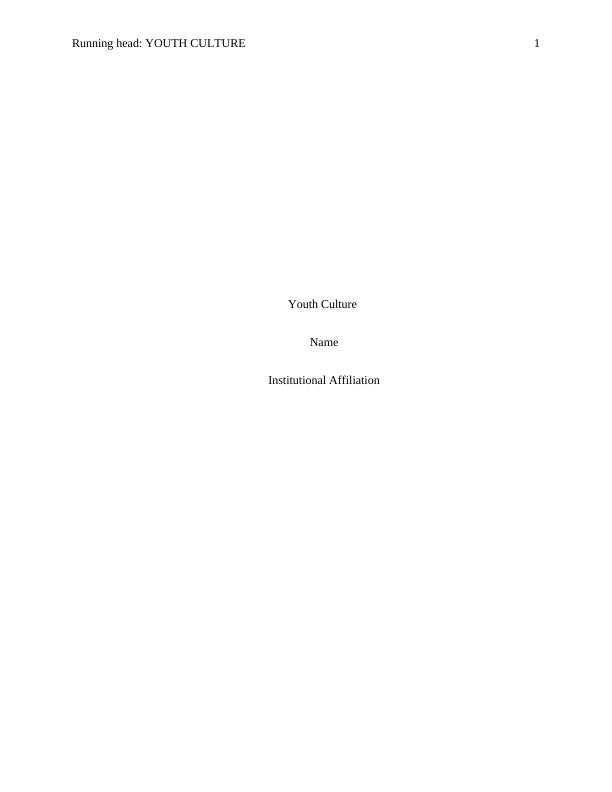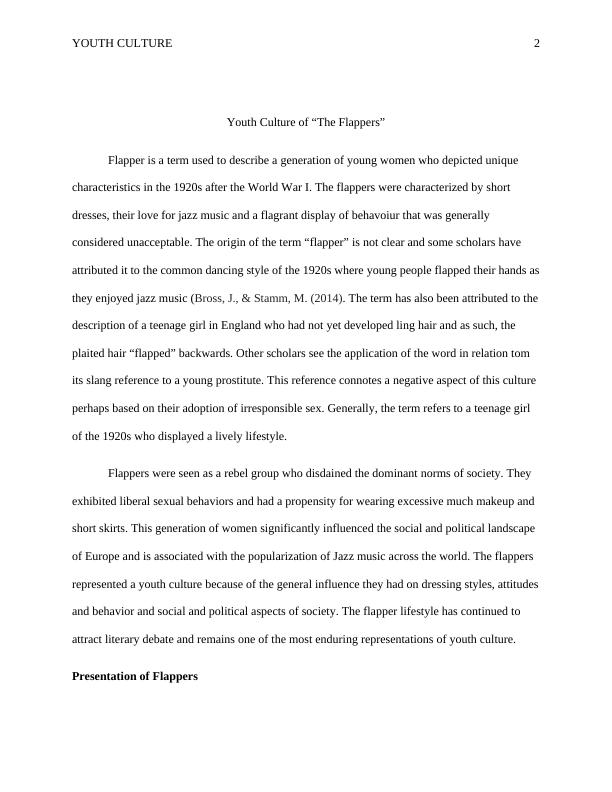Youth Culture of “The Flappers”
Write an essay analyzing a youth culture, their self-expression, subculture status, acts of resistance, and their relation to social problems and inequalities.
9 Pages2728 Words365 Views
Added on 2023-06-03
About This Document
This article discusses the youth culture of the flappers in the 1920s, their dressing style, attitudes, and behavior. It explores their influence on society and how they defied societal norms. The article also highlights the impact of the flapper generation on fashion and cultural trends across the world. Subject: Youth Culture, Course Code: N/A, Course Name: N/A, College/University: N/A
Youth Culture of “The Flappers”
Write an essay analyzing a youth culture, their self-expression, subculture status, acts of resistance, and their relation to social problems and inequalities.
Added on 2023-06-03
ShareRelated Documents
End of preview
Want to access all the pages? Upload your documents or become a member.
Challenges of rock and roll music in America in 1950s
|6
|1185
|215



